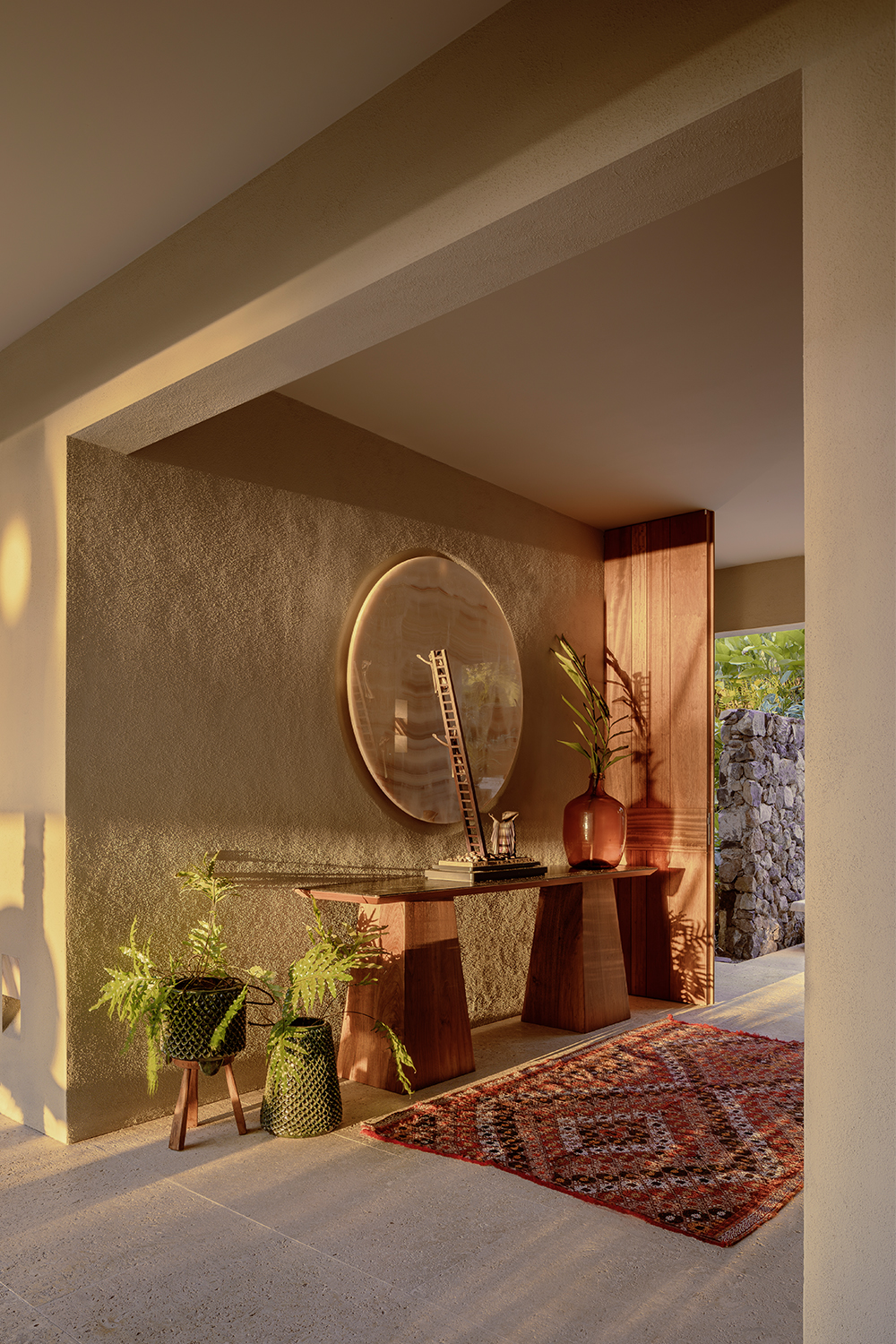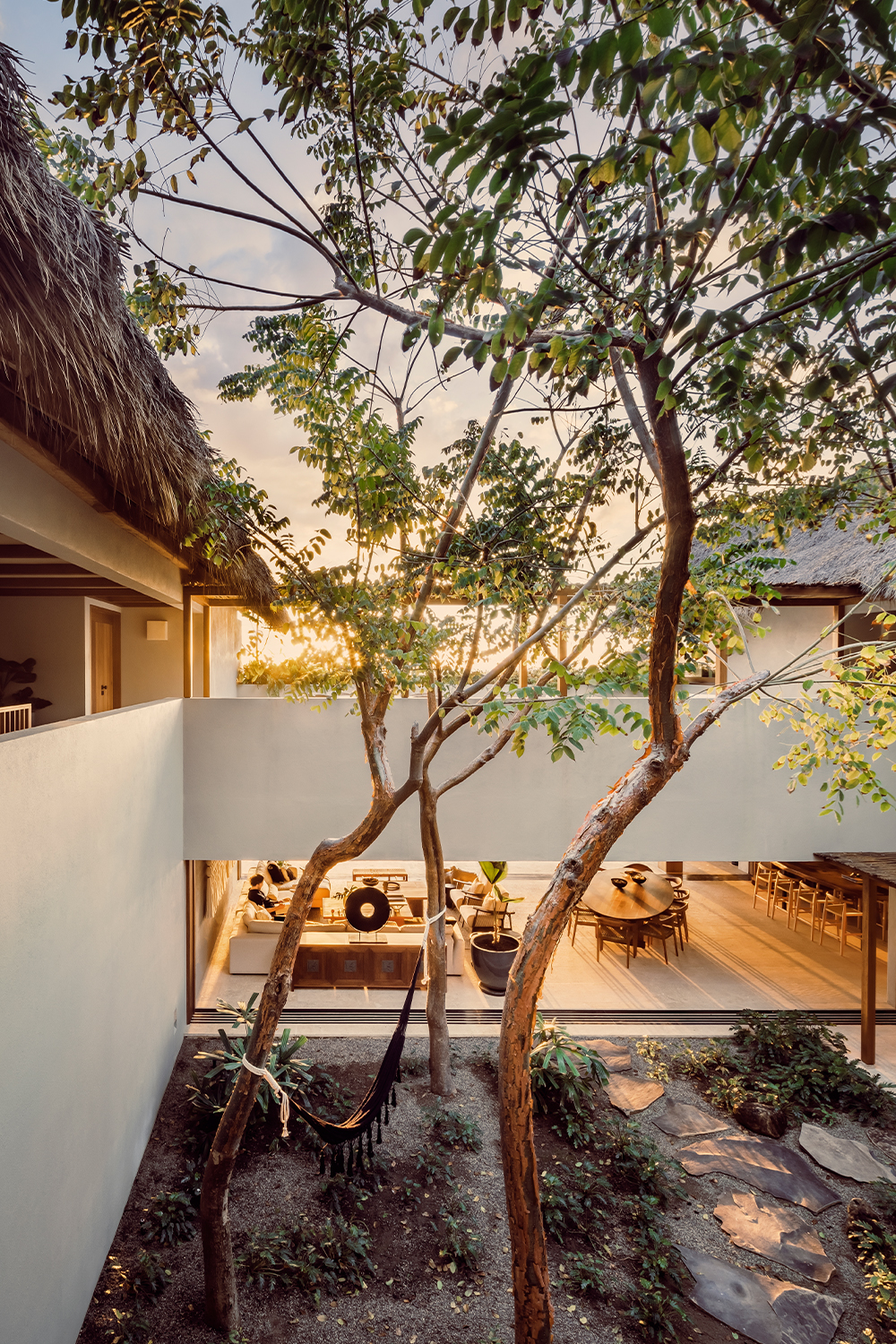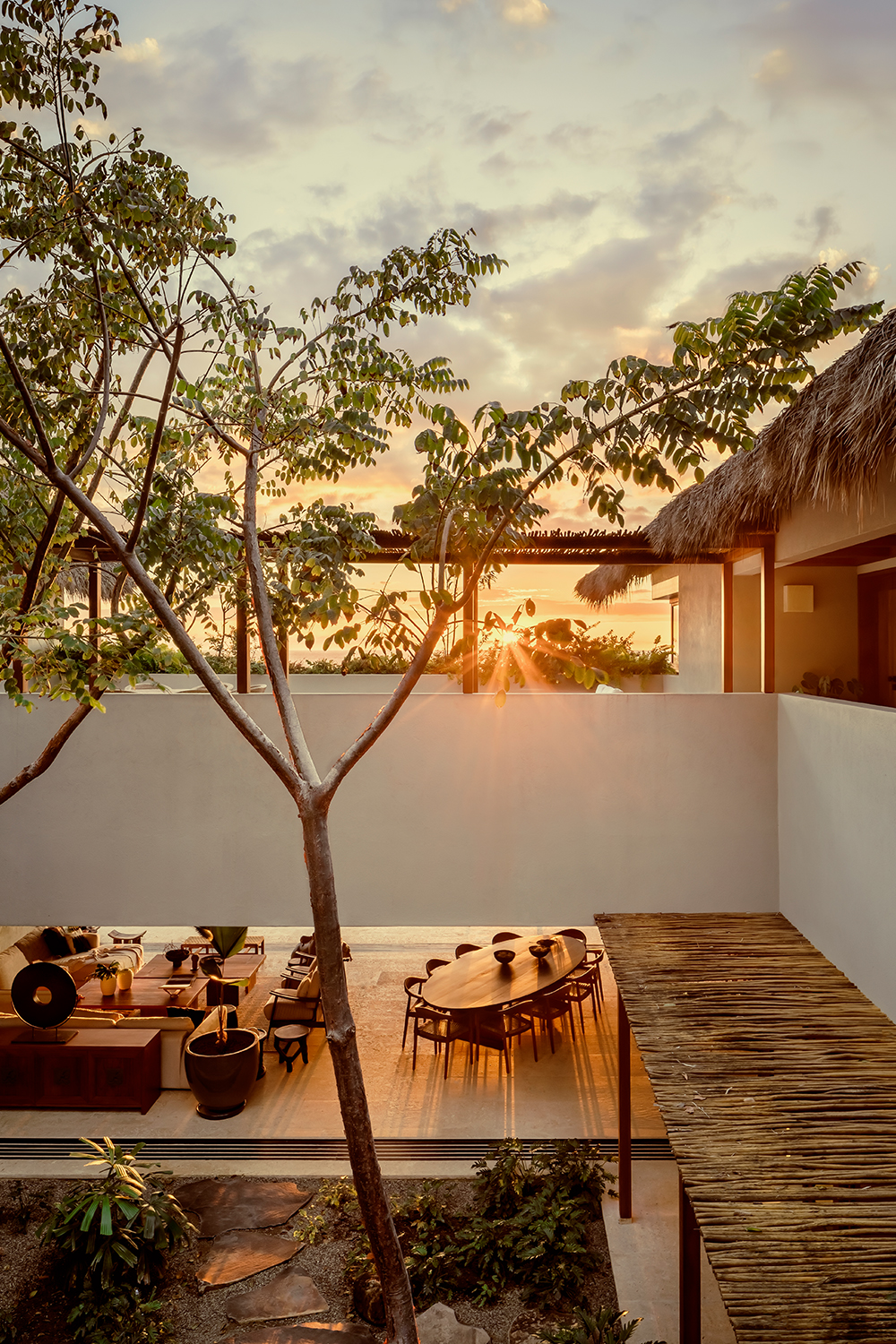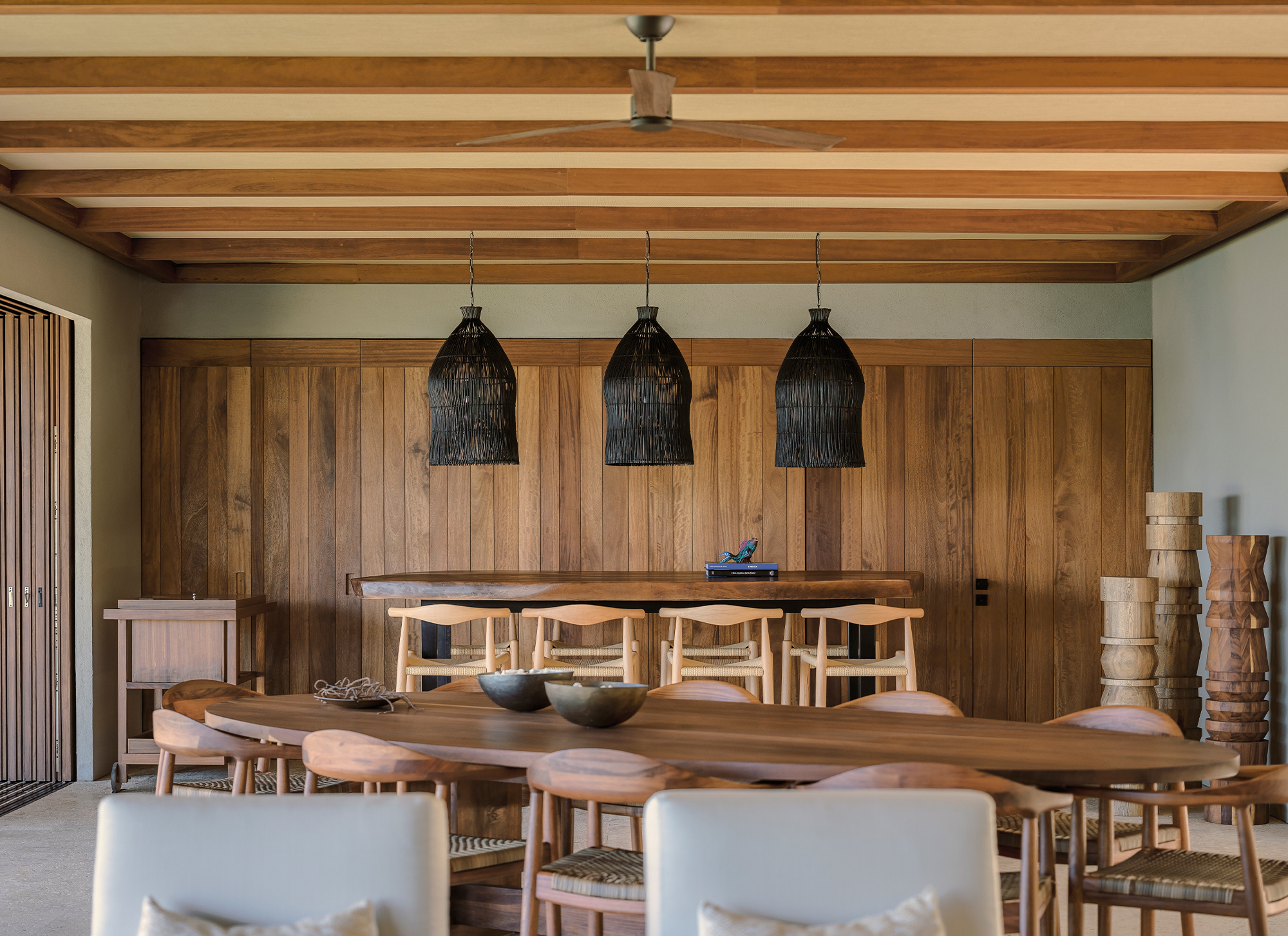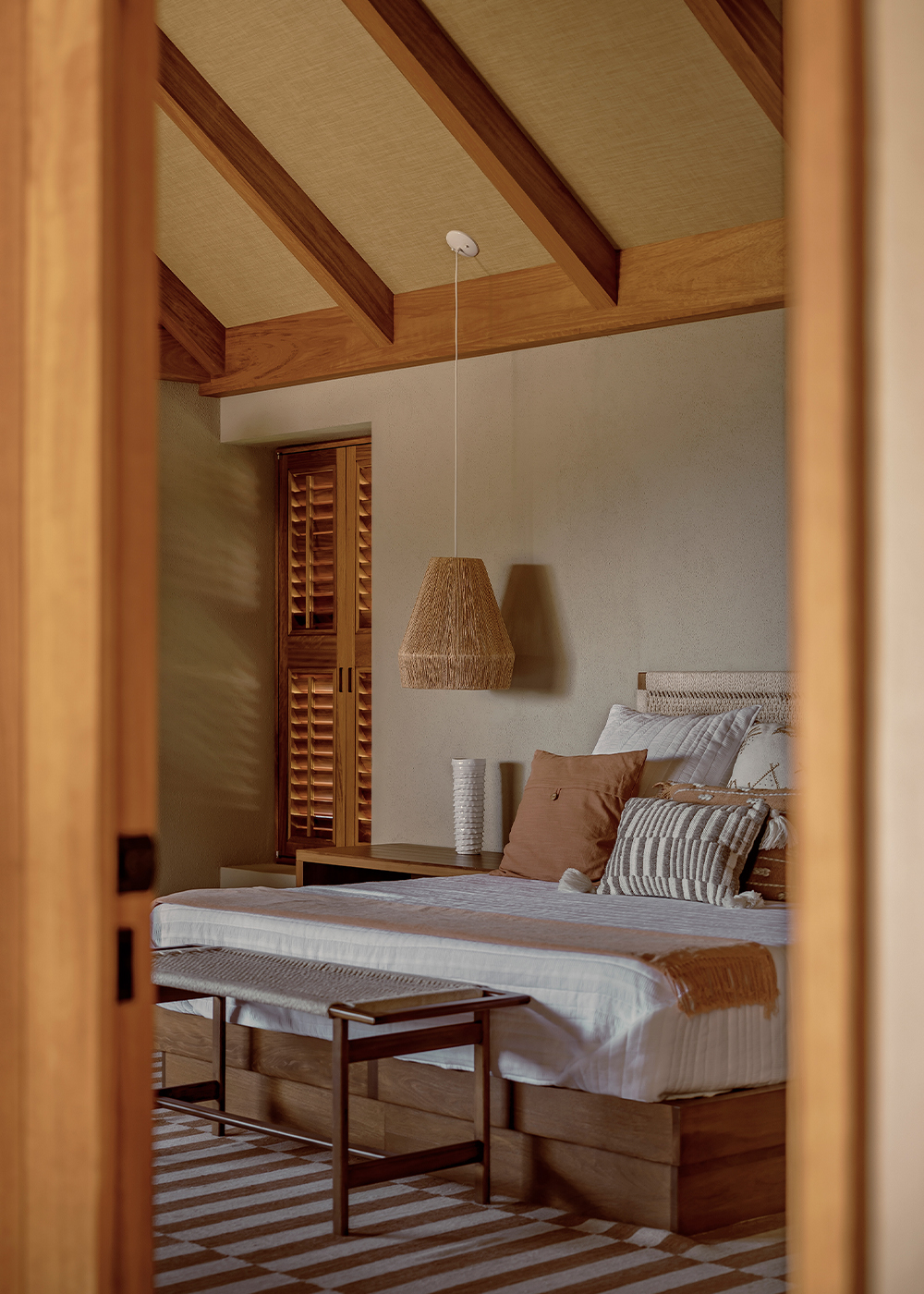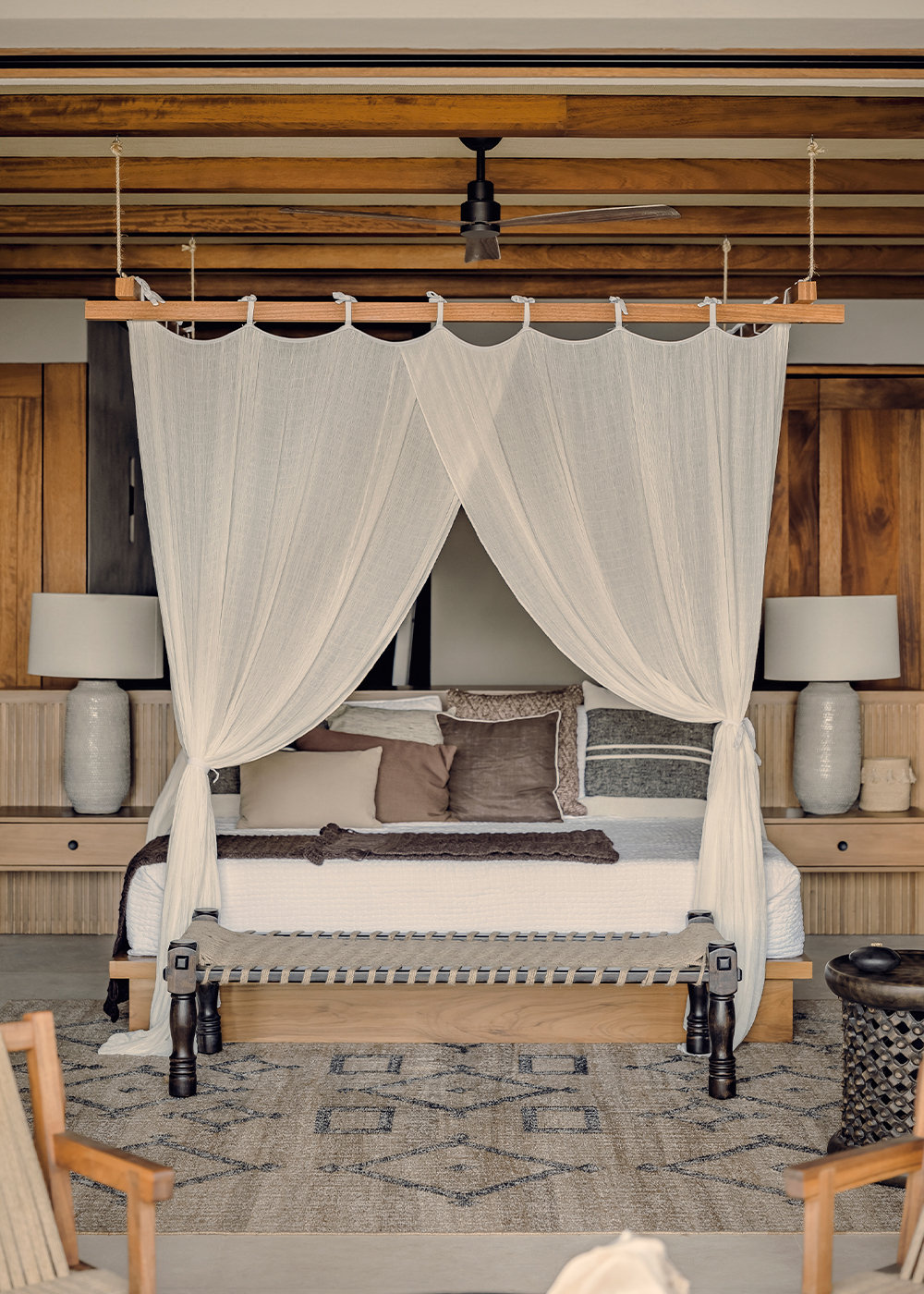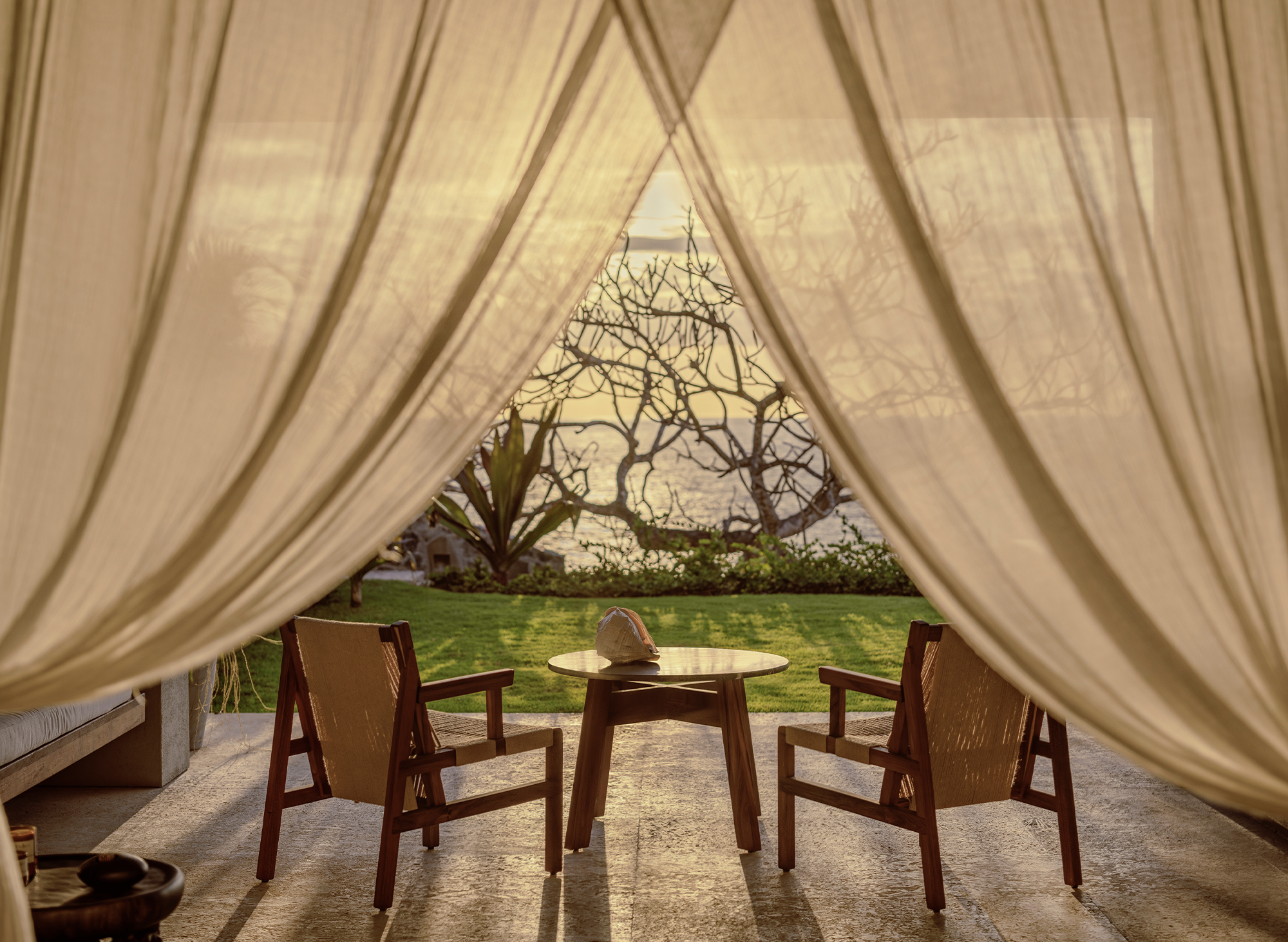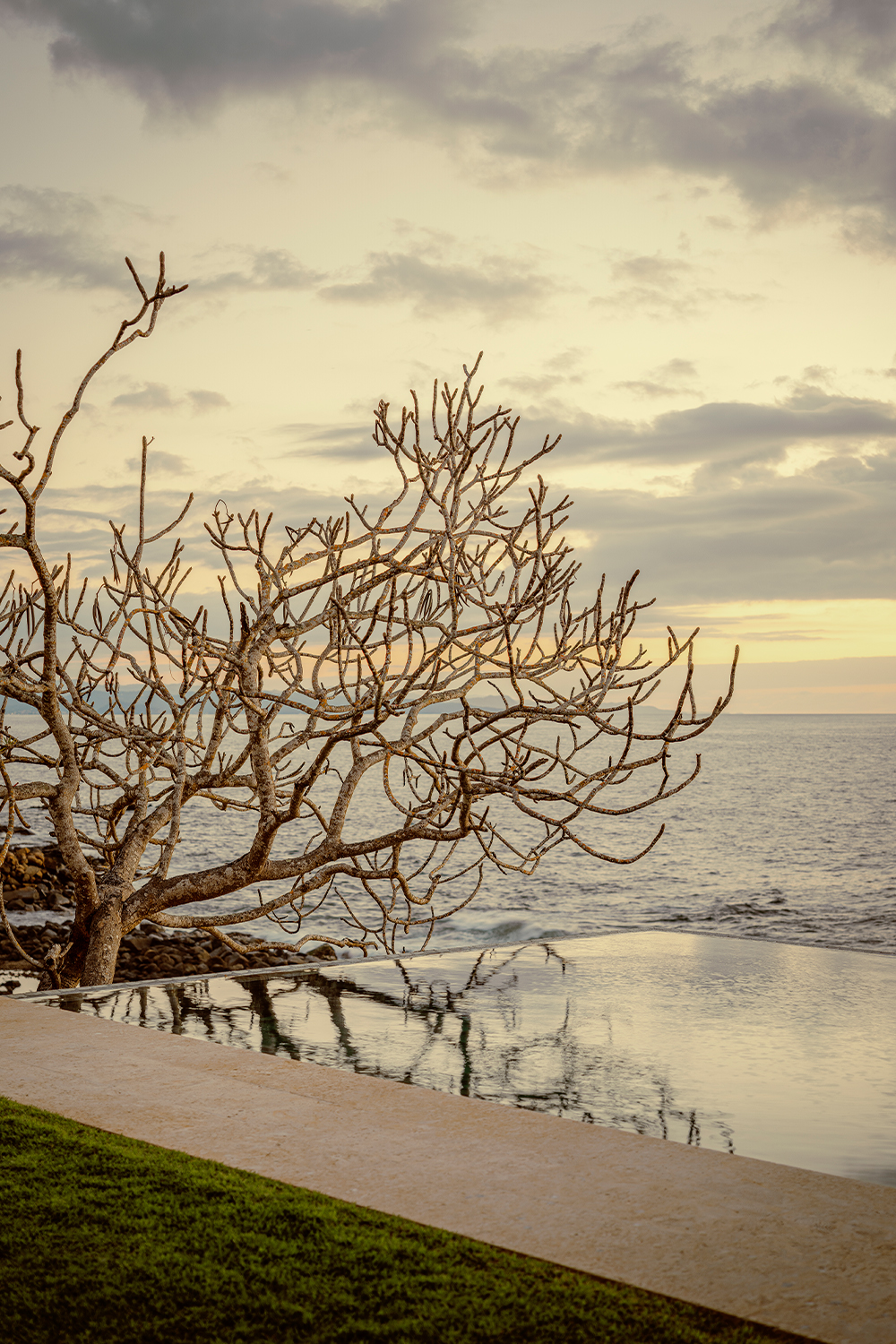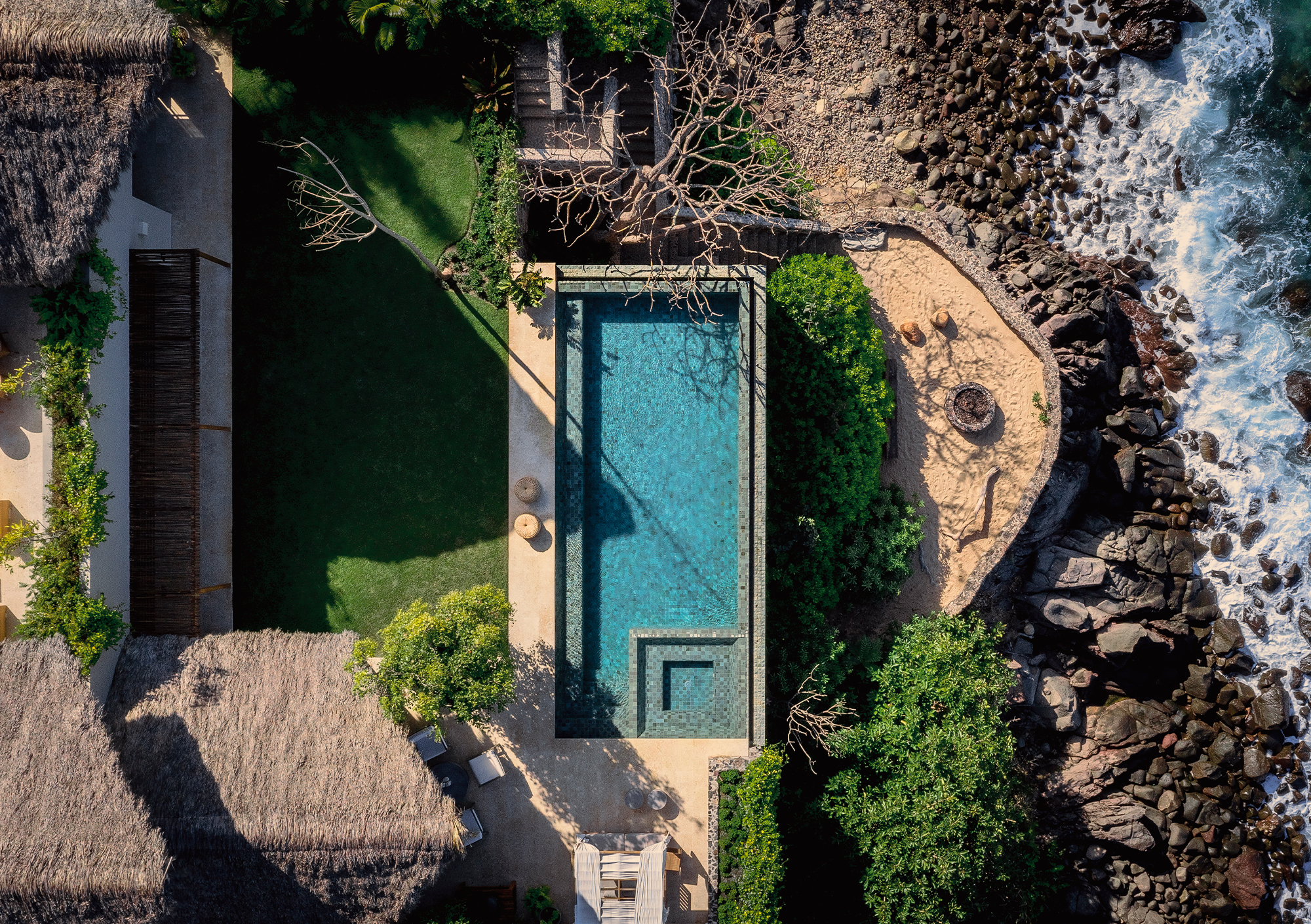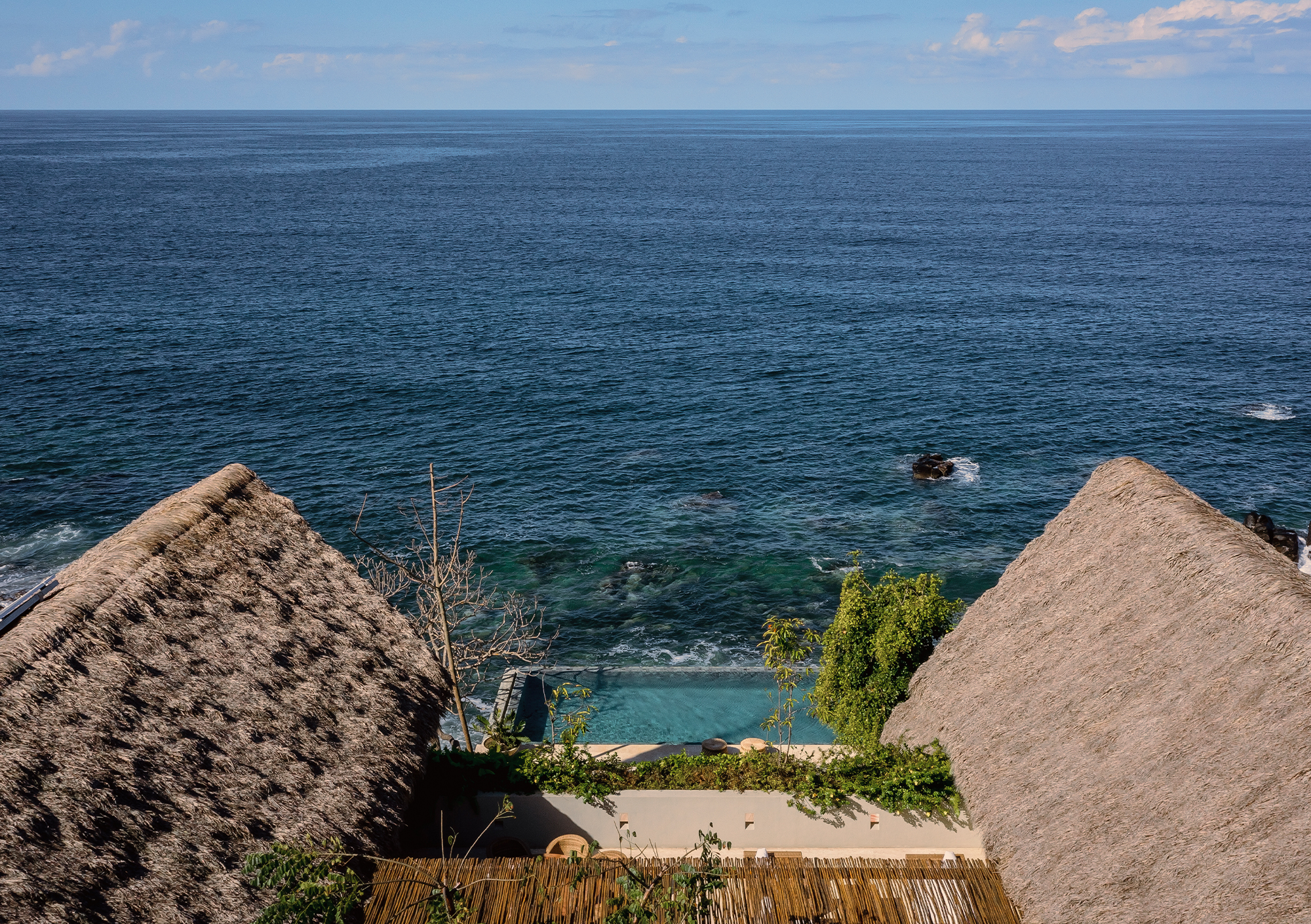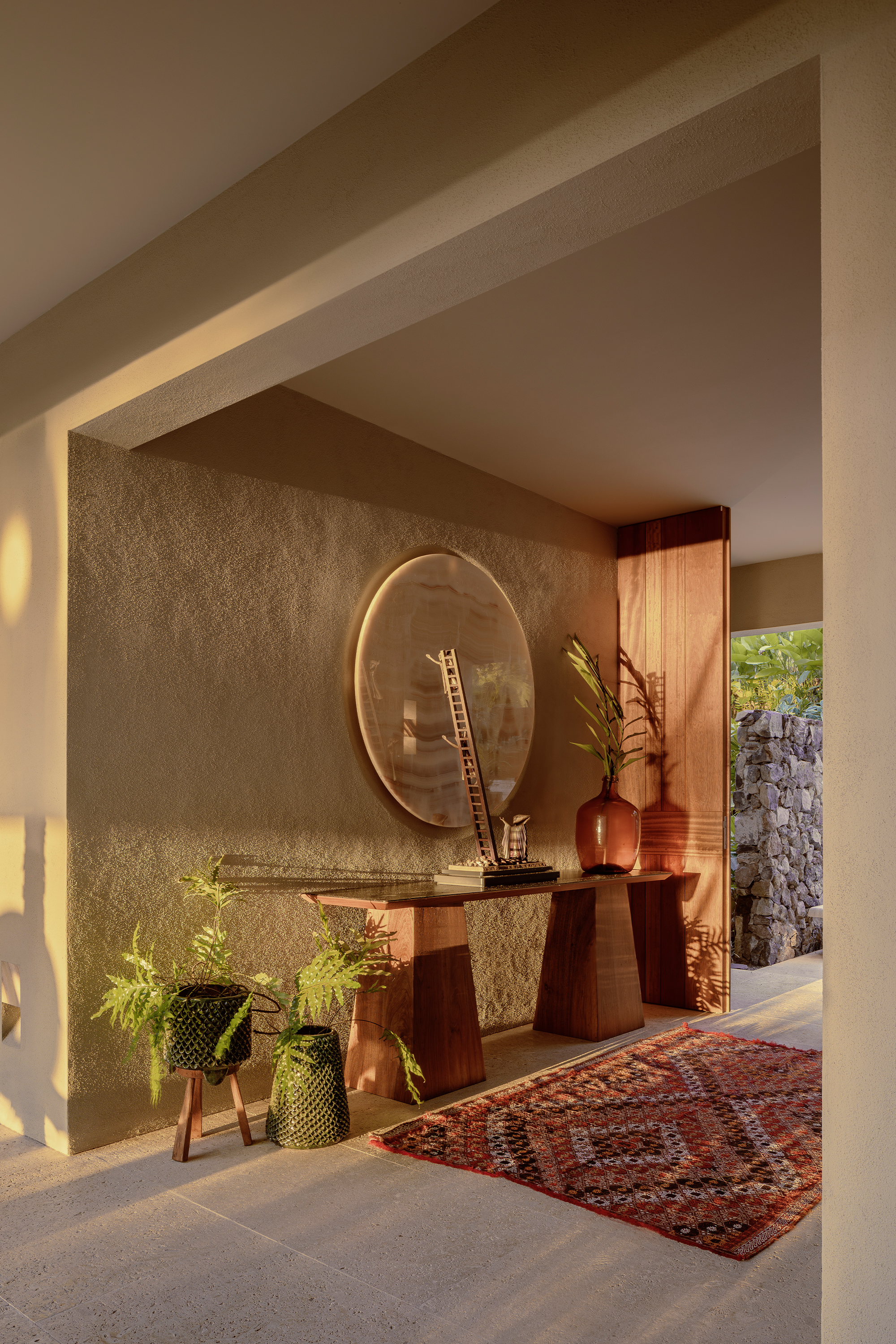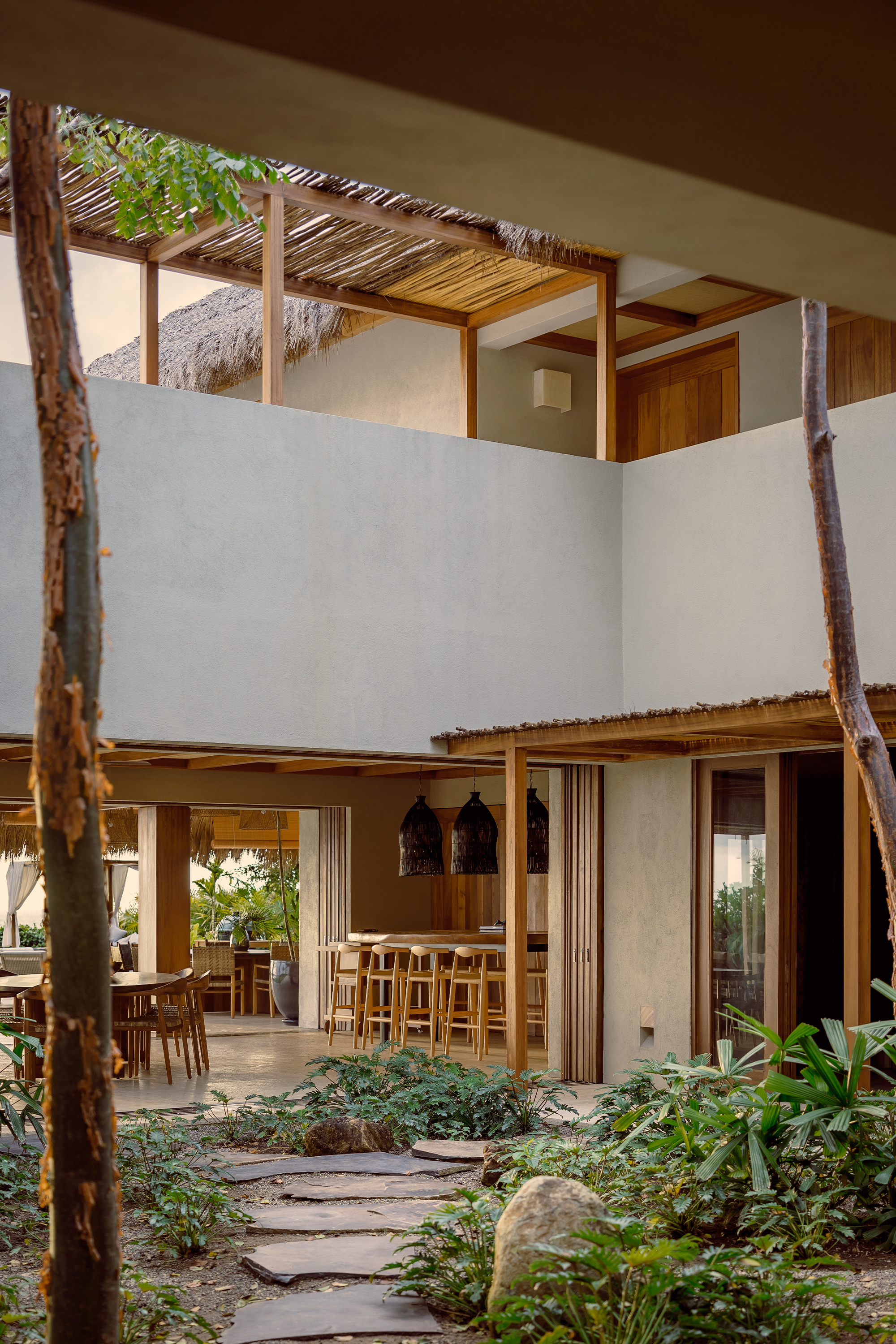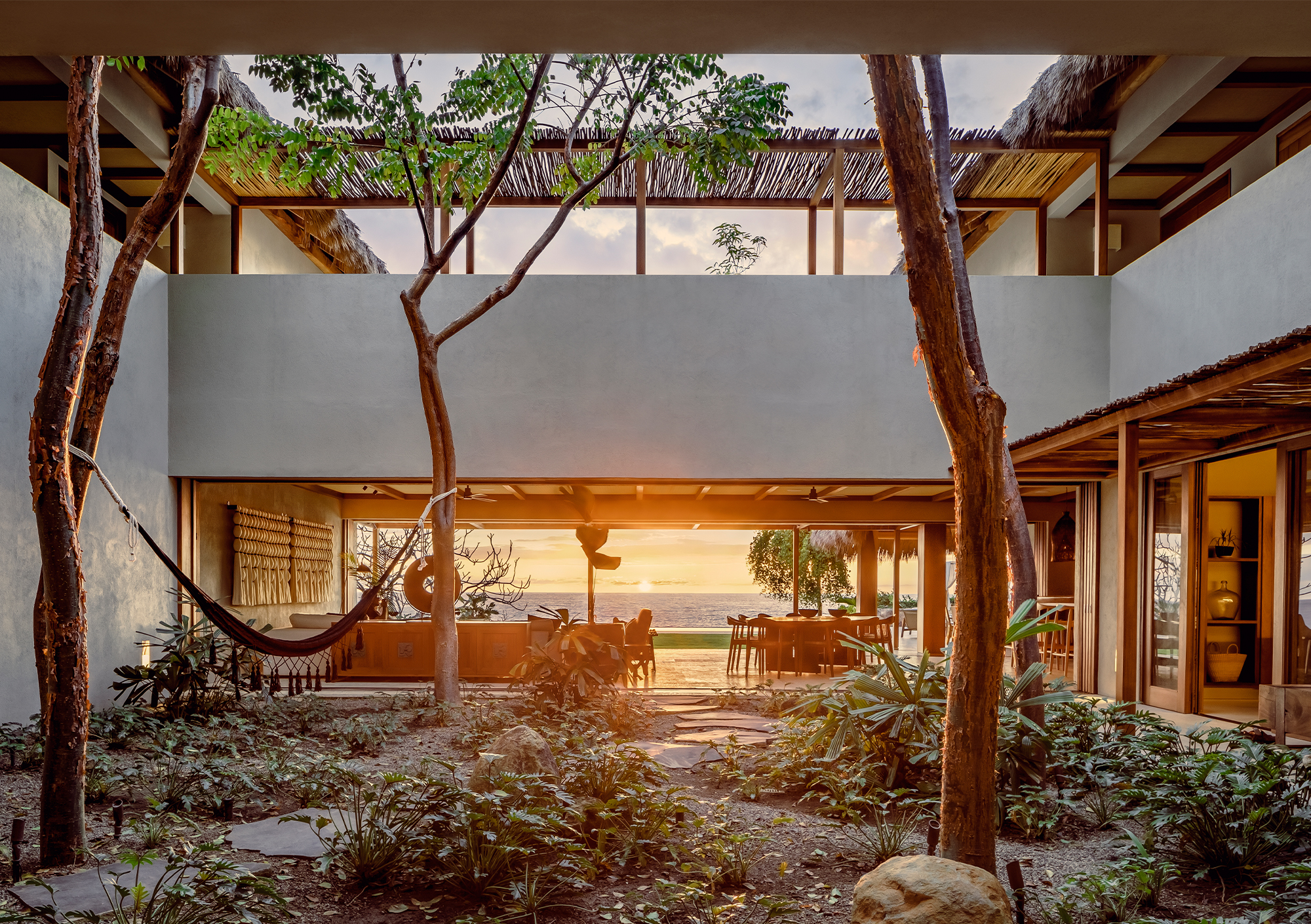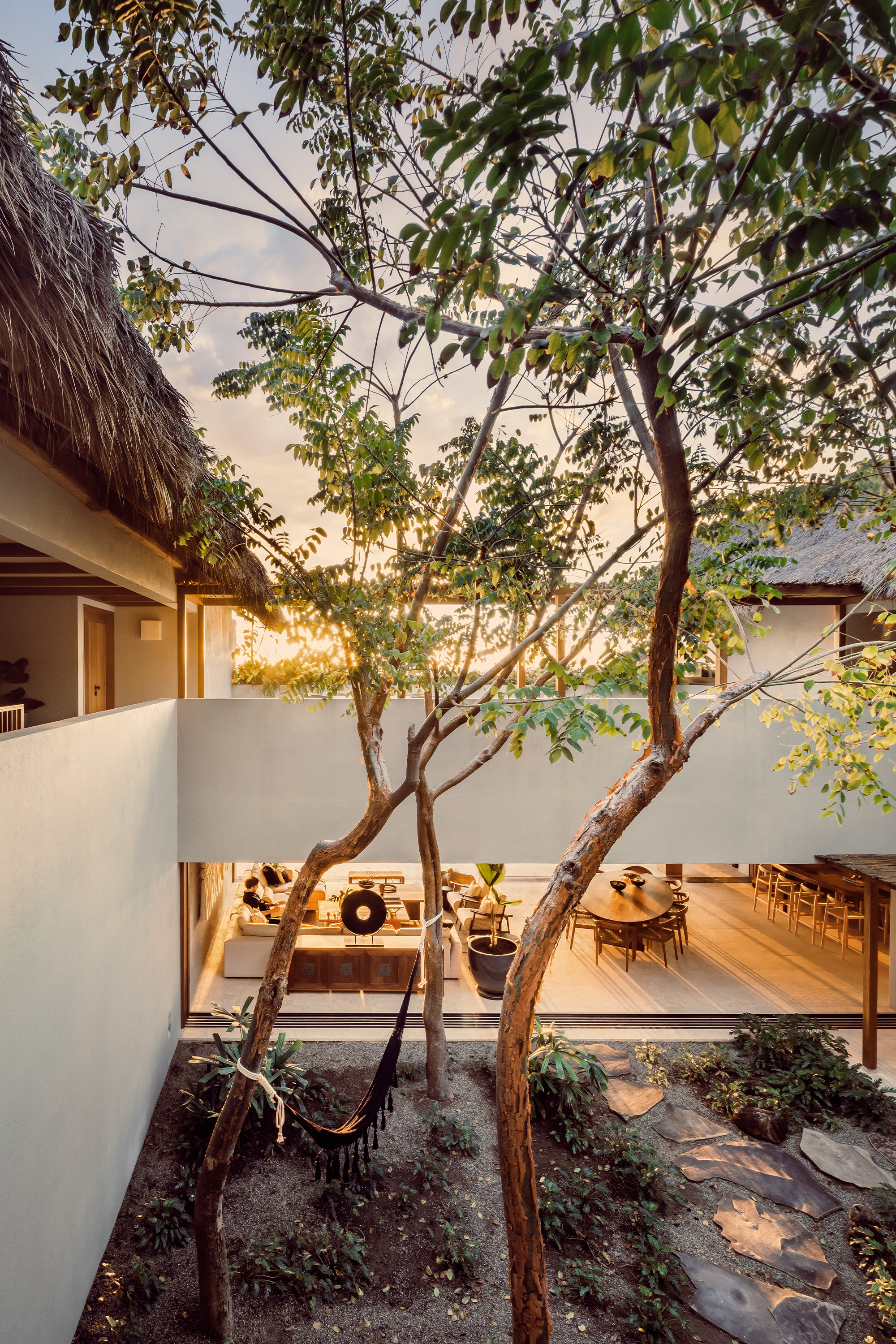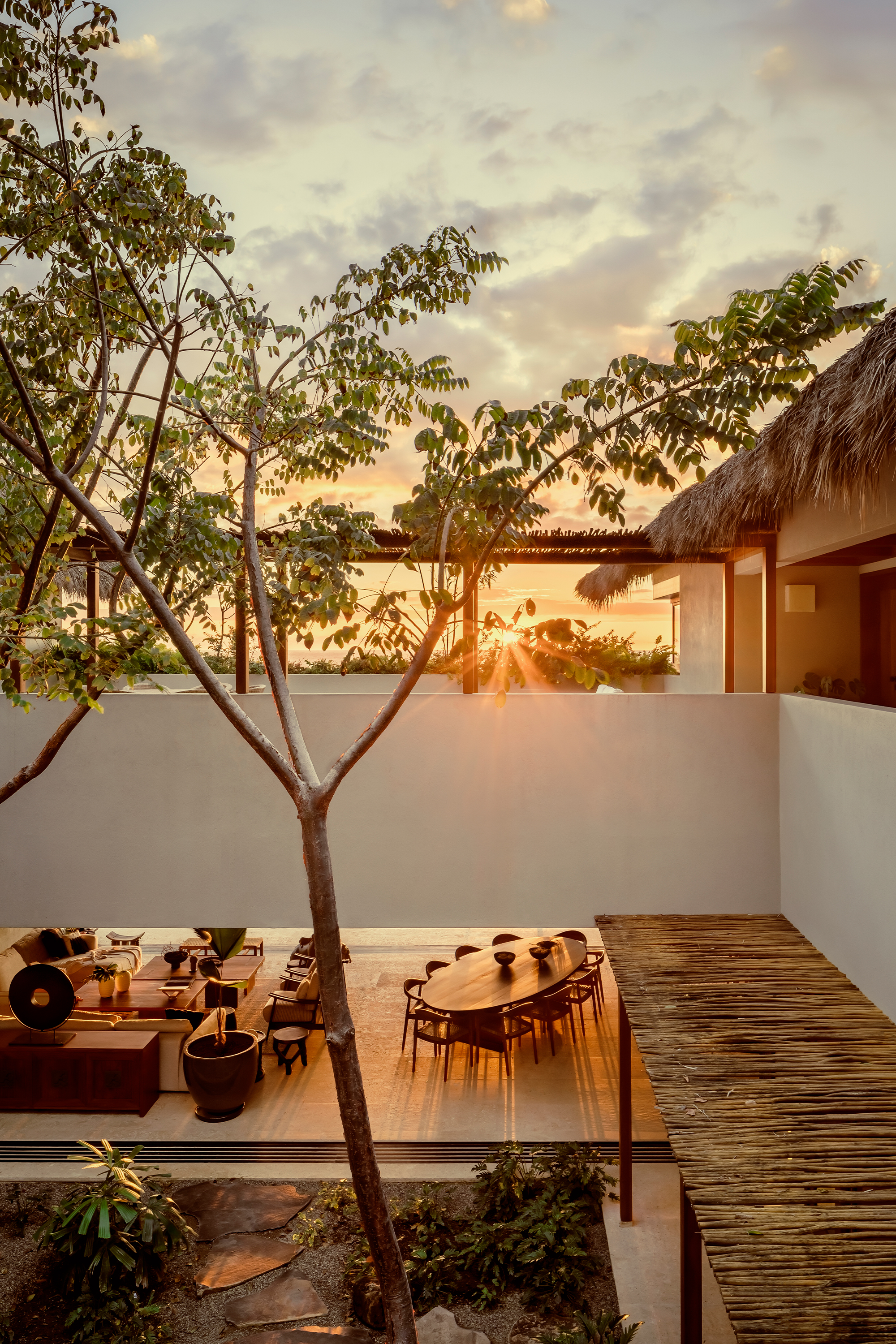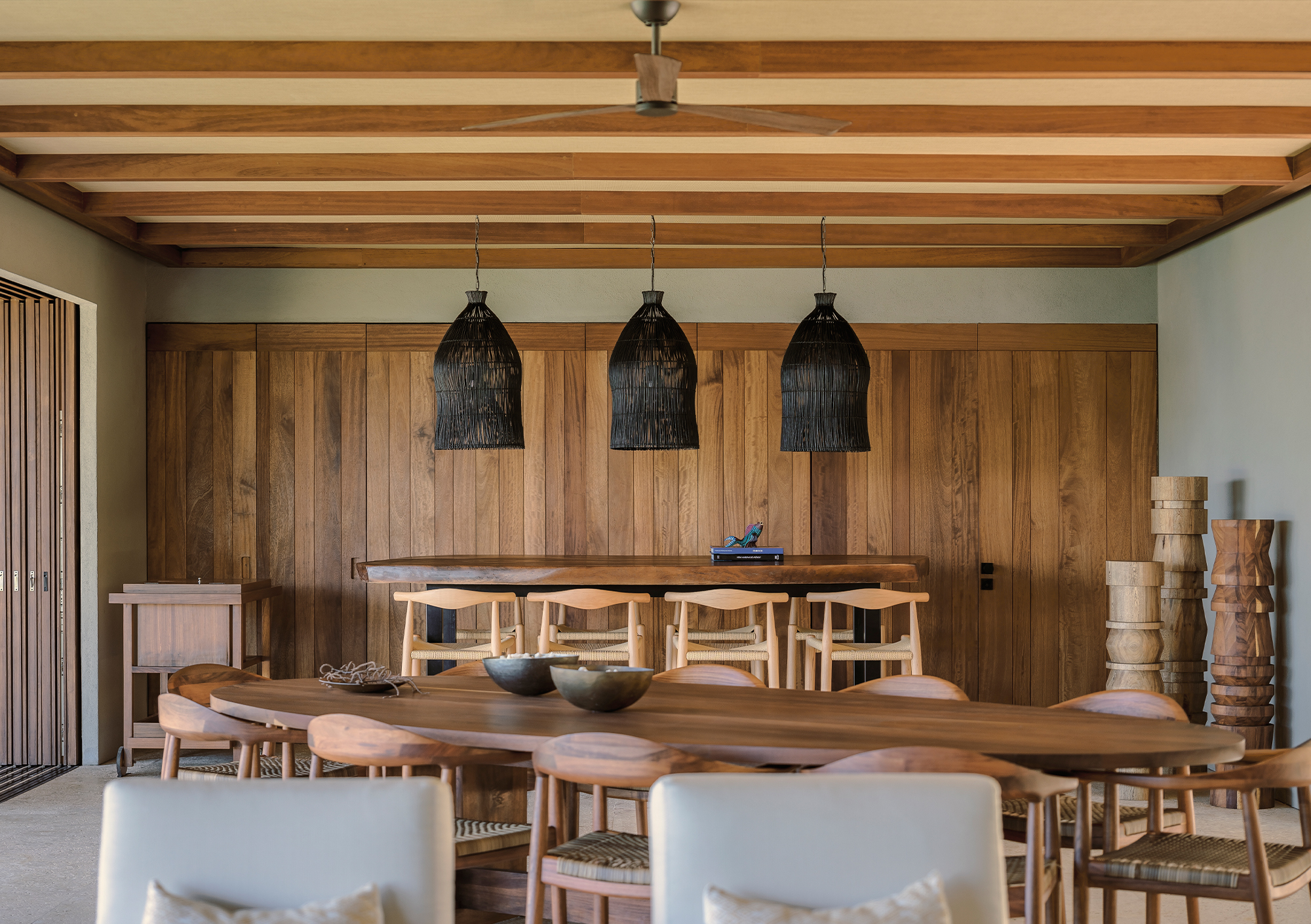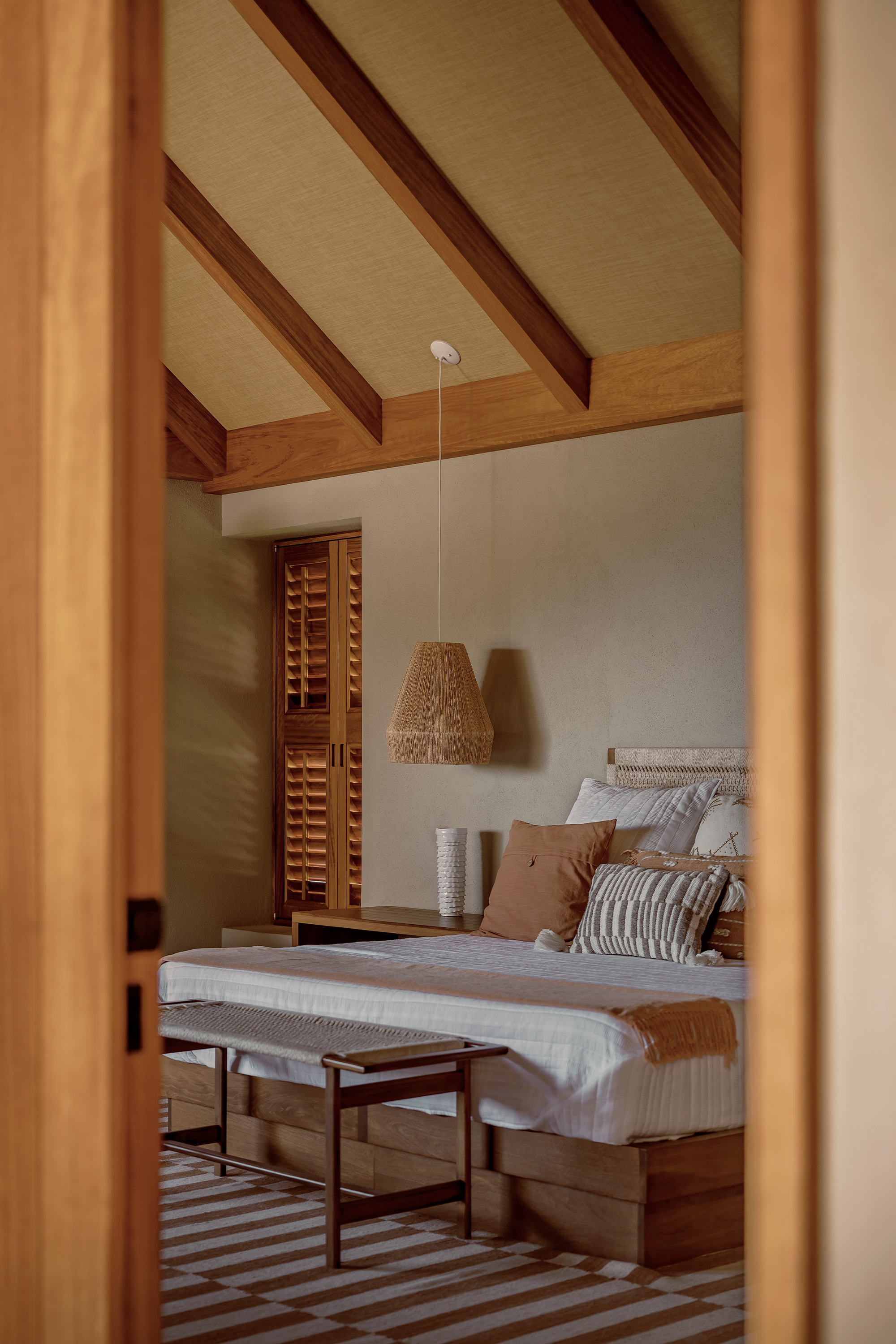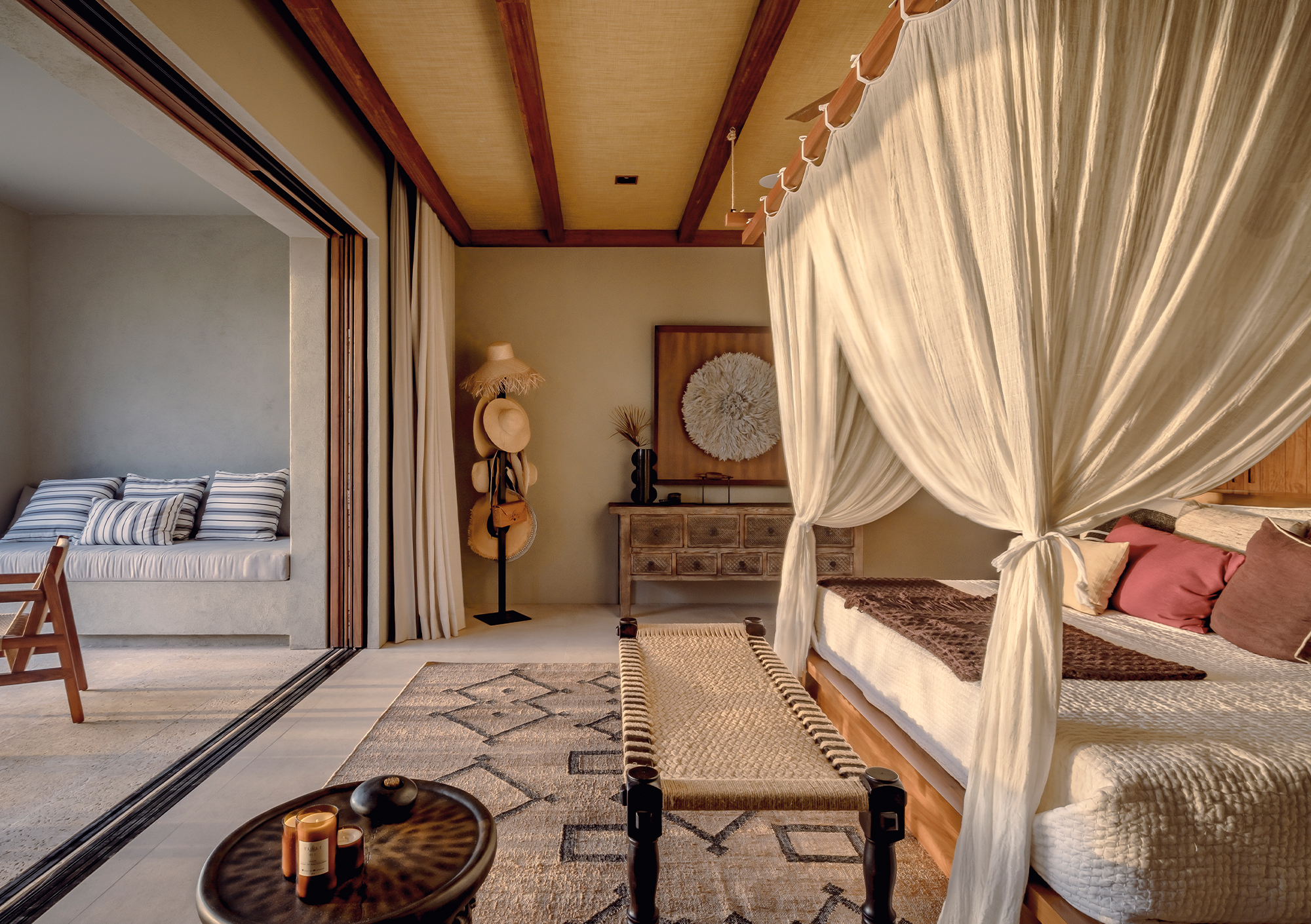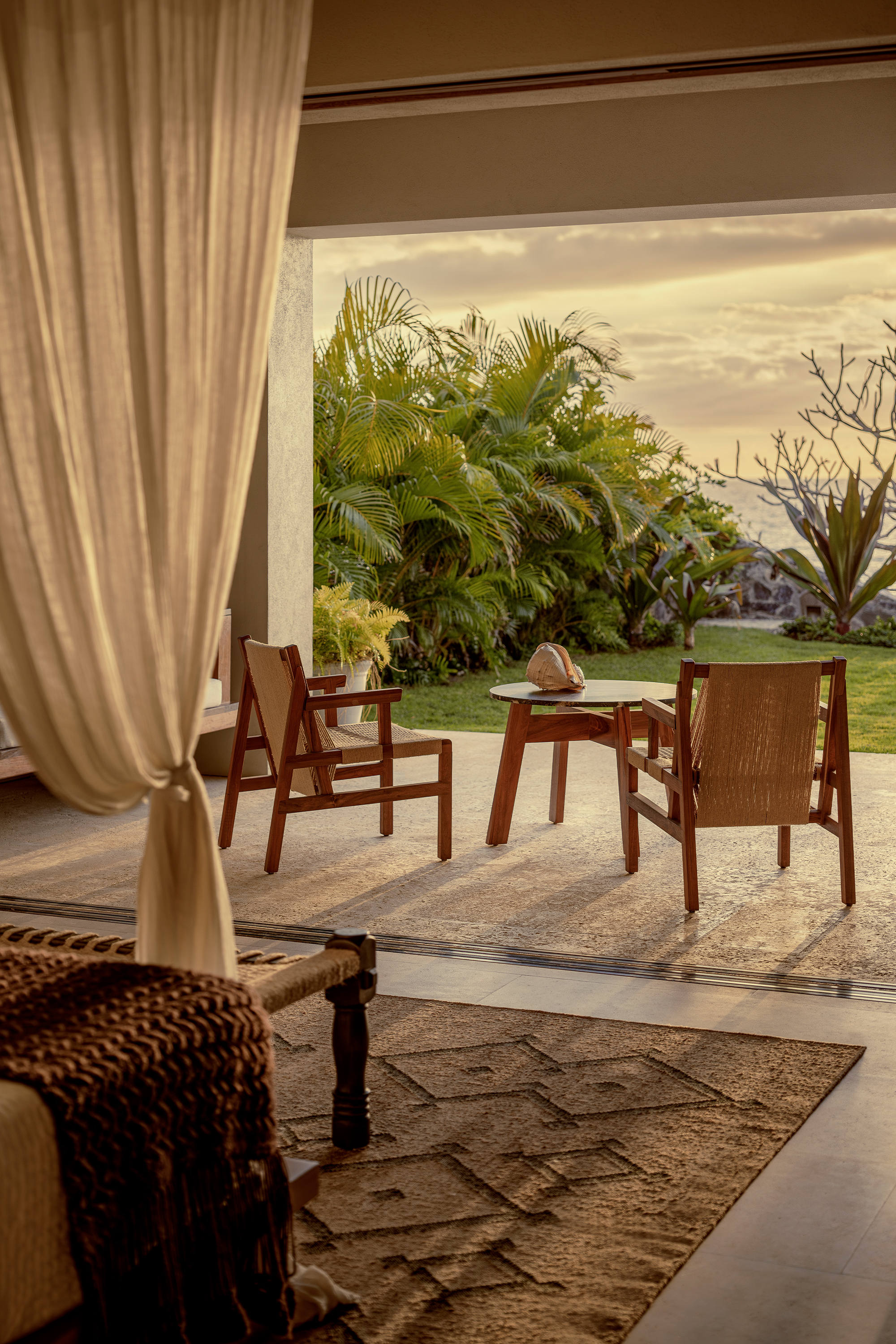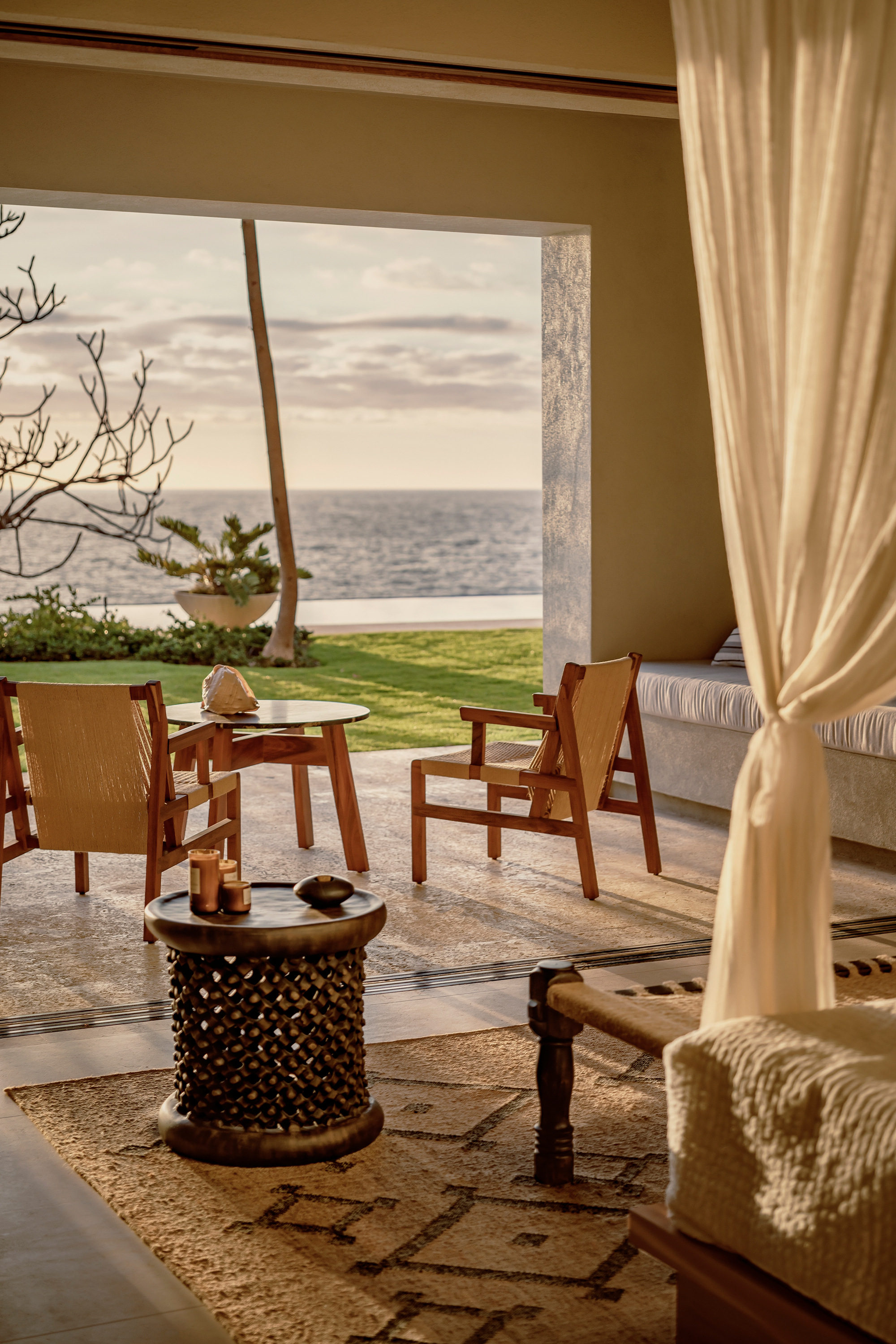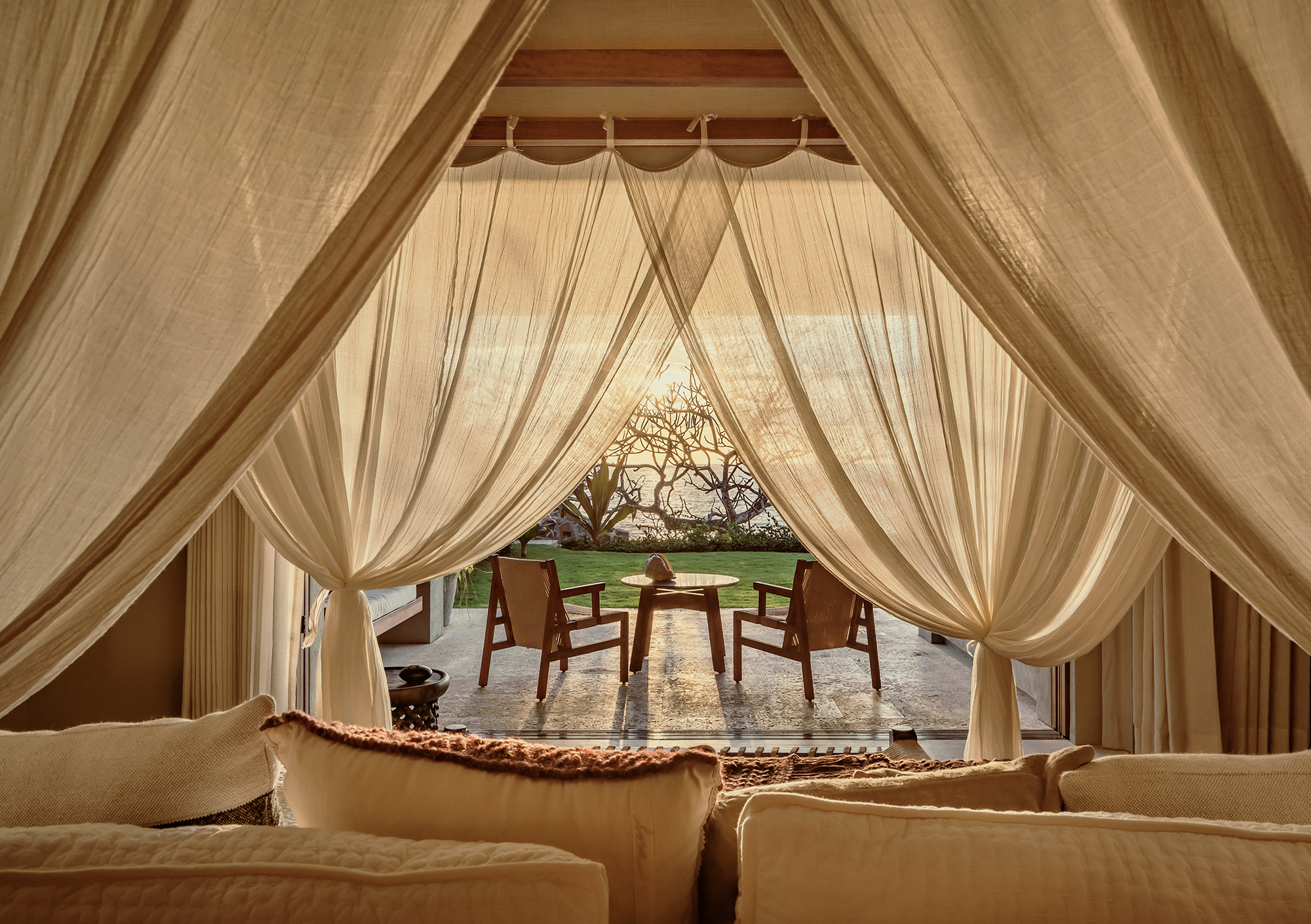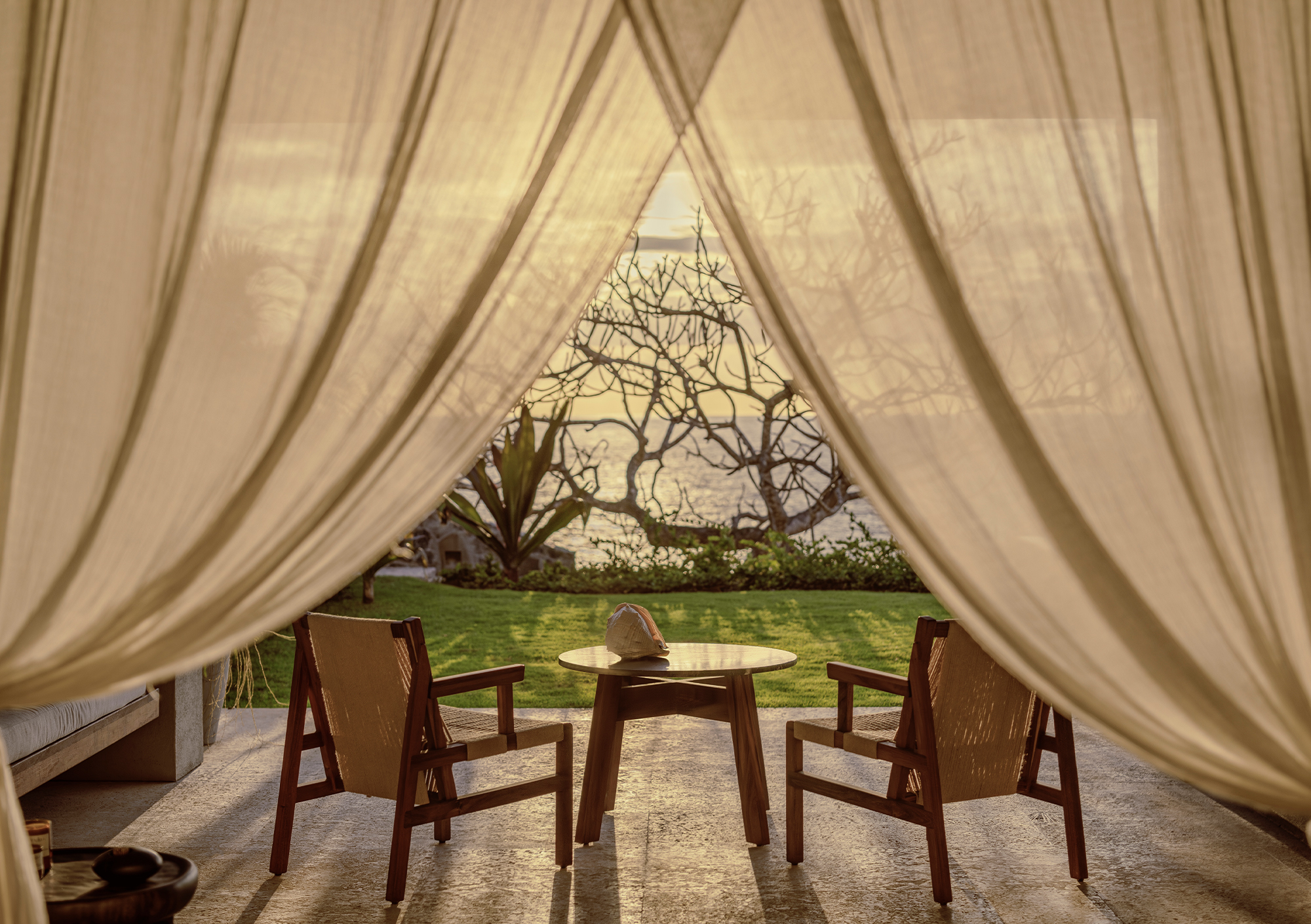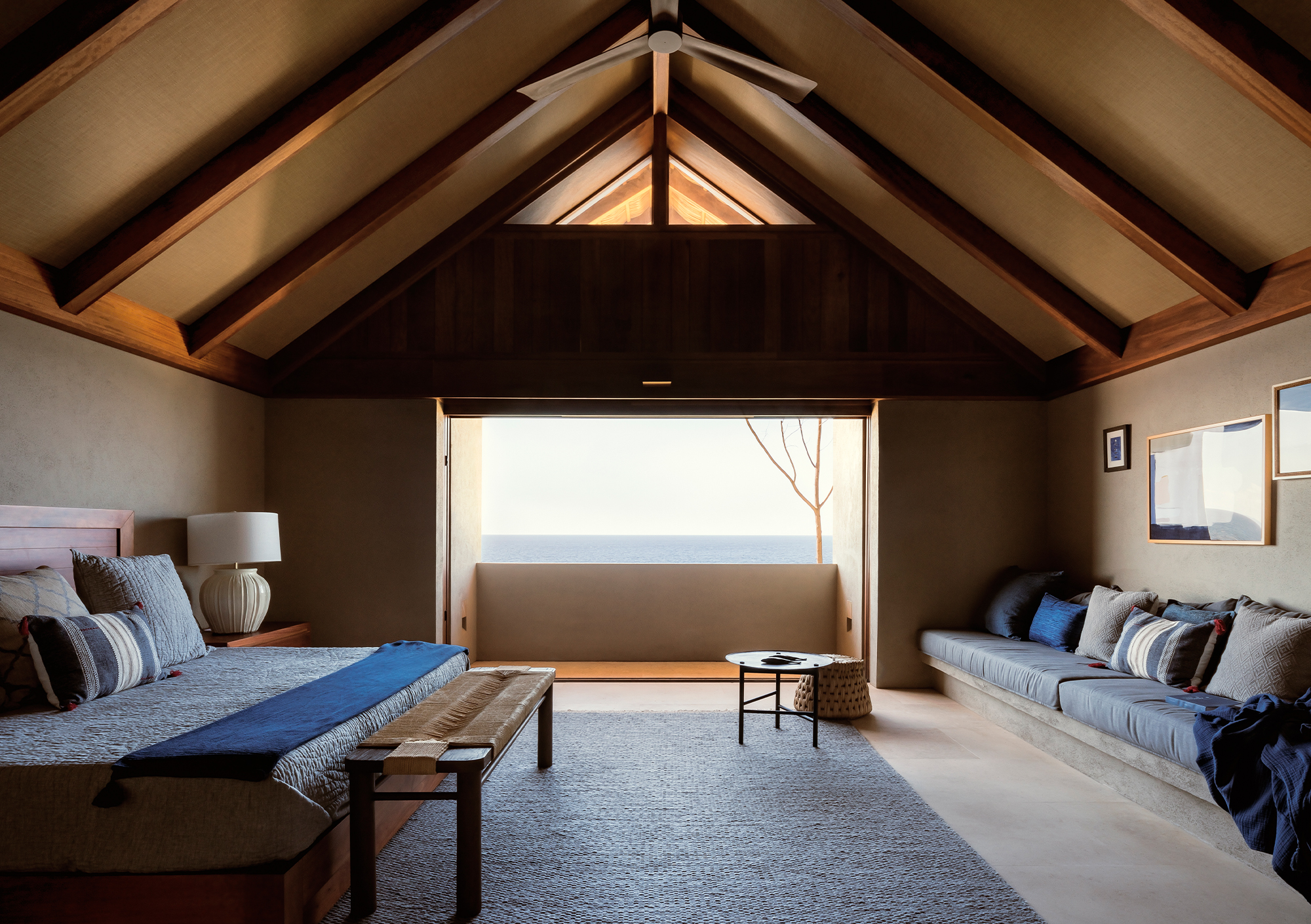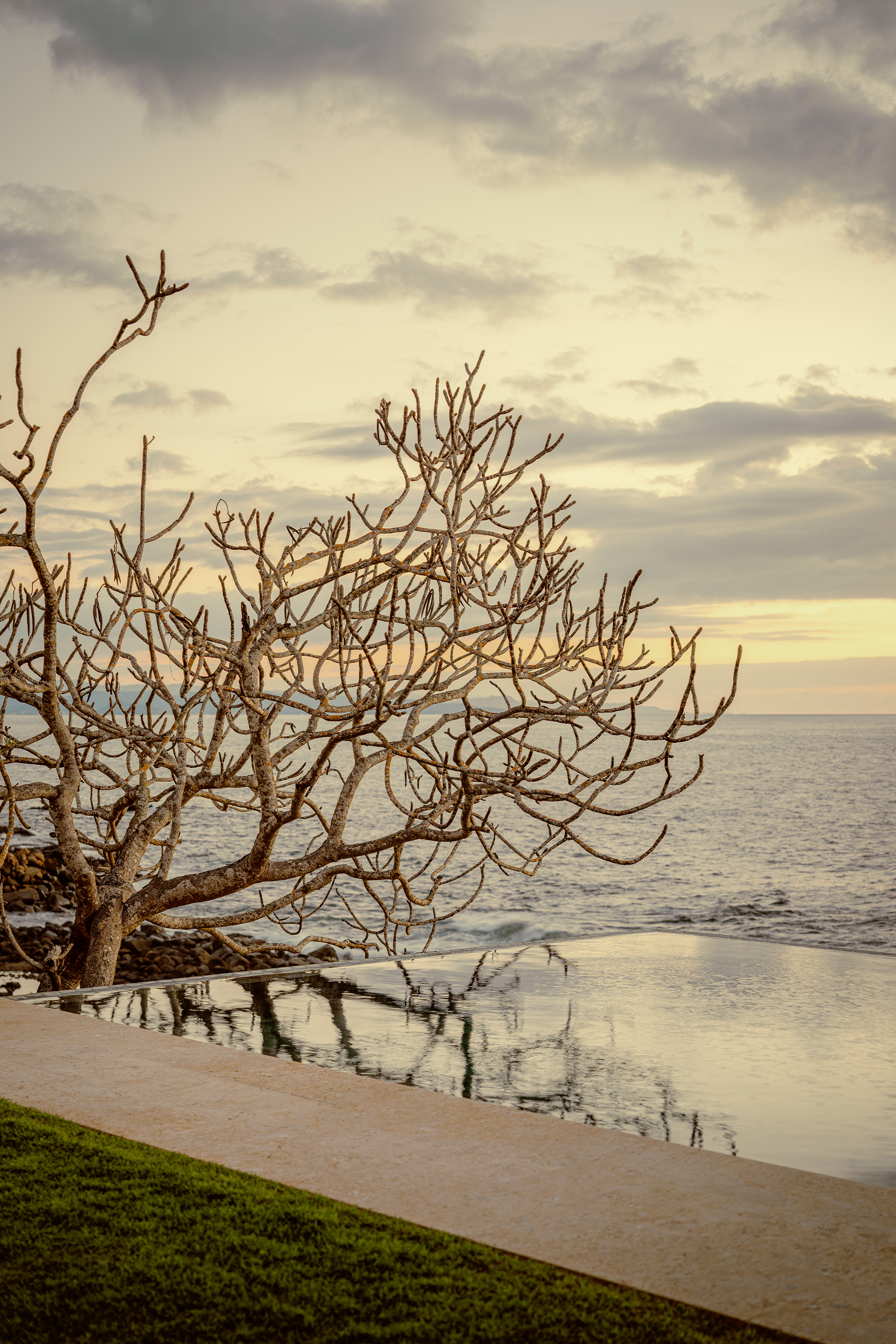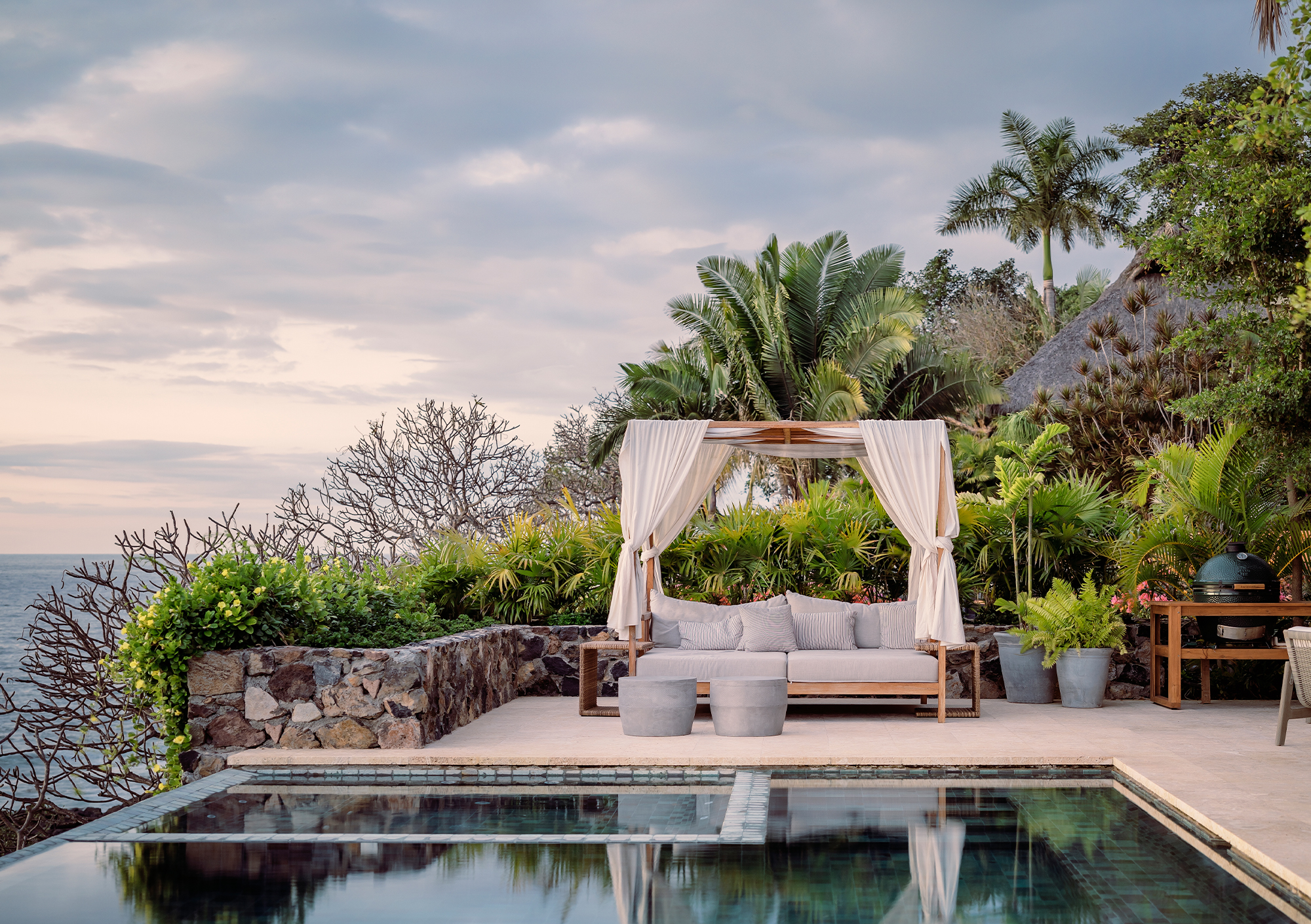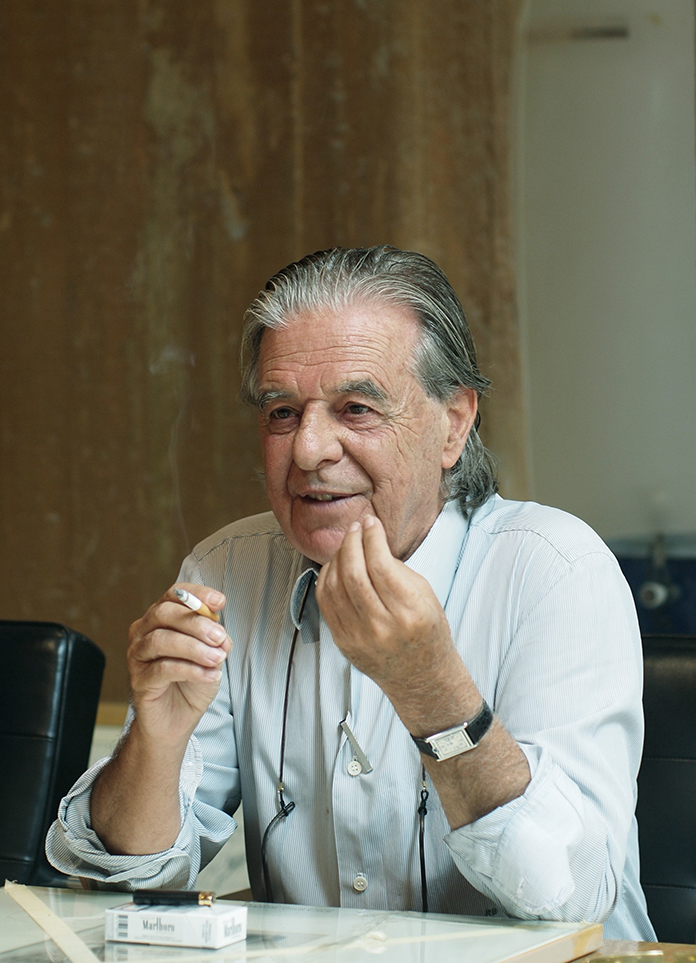- ARCHITECTURE
- Javier Duenas Estrada
- INTERIOR
- Kenya Rodríguez Estudio
- PHOTOGRAPHY
- César Béjar Studio
- TRANSLATOR
- Gina
Interior design, as an extension of architectural thought, is a powerful tool for revealing what we often overlook. In our efforts to meet spatial needs, to complement architecture, soften its boundaries, and create more intimate, human atmospheres, we frequently forget that the first setting we inhabit is the very context that surrounds us.
Casa Puesta del Sol, a vacation home nestled between the Mexican Pacific and the Nayarit jungle, is a conscious exercise in engaging with its surroundings. This residence draws from its immediate landscape, integrating itself into the environment through a design that honors and amplifies its characteristics. The result is a home that transcends its role as a shelter and becomes a vessel for experiencing place, memory, and connection.
The arrival sequence itself underscores this intention. Visitors are greeted by dense, wild vegetation that seems to reclaim the path, wrapping the home in a natural buffer that both shields and reveals. This sense of discovery continues as one steps onto the soft, yielding sand, which feels almost inseparable from the house's material language. The texture of the grains is mirrored in the tactile elements found throughout the interiors — in rough, woven textiles and handcrafted details that invite touch and exploration.

